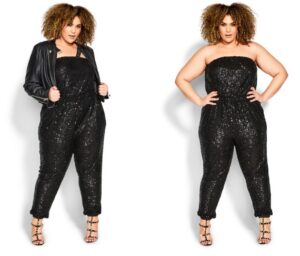Wear comfortable and flexible clothing for indoor rock climbing. Finding the right attire for indoor rock climbing is essential to ensure a comfortable and enjoyable experience.
As you navigate through challenging routes and conquer obstacles, your clothing should provide unrestricted movement and support. Comfortable, flexible clothing made from materials like spandex or nylon is perfect for indoor rock climbing. Avoid wearing baggy clothing that may get caught on holds or restrict your movements.
Additionally, opt for athletic shoes with good grip and support to enhance your climbing performance. Prioritize comfort and safety when choosing your climbing attire to fully immerse yourself in this adrenaline-pumping activity.
Dressing For Success
Indoor rock climbing is a physically demanding activity that requires the right attire for comfort and safety. When choosing what to wear, layering is key for optimal comfort and versatility. Start with a moisture-wicking base layer made from fabrics such as polyester or merino wool to help regulate body temperature and keep sweat away from the skin. Pair it with a breathable mid-layer like a lightweight fleece or a breathable synthetic material to provide insulation and allow for easy movement. Finally, top it off with a lightweight outer layer that is water-resistant and windproof to protect against the elements.
It is important to choose clothing that allows for freedom of movement and doesn’t restrict your range of motion. Look for clothing with stretchable materials and ergonomic designs to enhance your climbing experience. Avoid wearing baggy or loose-fitting clothing that can get snagged or caught on the climbing holds. Additionally, wearing comfortable and supportive climbing shoes is crucial for foot grip and stability on the wall.
Essential Gear For Climbing
Indoor rock climbing requires a specific set of gear to ensure safety and maximize performance. The most important gear item is climbing shoes that provide excellent grip on the rock surface. These shoes have a specialized rubber sole that enhances friction, allowing climbers to securely grip footholds and maintain stability. Another essential gear piece is a comfortable harness that offers both safety and support during climbs. The harness attaches to a rope system, providing protection against falls and allowing climbers to ascend the wall with confidence. To improve grip even further, climbers often use a chalk bag. This bag contains powdered chalk that climbers can apply to their hands, keeping them dry and enhancing their grip on holds. With the right gear, indoor rock climbing becomes an enjoyable and thrilling experience.
Protecting Your Body
When indoor rock climbing, it is important to protect your body from potential injuries. This includes wearing a helmet to prevent head injuries. Head injuries can be serious and potentially life-threatening, so ensuring you have a properly fitting helmet is crucial.
Another area to pay attention to is your fingers and hands. Climbing involves a lot of gripping and holding on to rocks, so wearing proper finger and hand protection is essential. This could include wearing gloves or finger tape to reduce the risk of blisters and calluses.
In addition to protecting your hands, it is also a good idea to consider using knee pads and elbow pads for added safety. These protective gear items can help cushion your falls and prevent scrapes and bruises.
Finding The Perfect Fit
When choosing clothing and gear for indoor rock climbing, finding the perfect fit is crucial. It is important to try on different sizes and styles of clothing and gear to ensure a snug yet comfortable fit. Rock climbing requires a wide range of movements, so clothing and gear should allow for freedom of movement while providing support and protection. Consulting with a professional is highly recommended to receive personalized advice based on individual needs and preferences. Their expertise will help you choose the right clothing and gear that will enhance your climbing experience and keep you comfortable and safe. Whether it’s finding the right size for climbing shoes or selecting the appropriate style of pants with stretch and durability, prioritizing fit is key to enjoying indoor rock climbing to the fullest.
Staying Hydrated And Nourished
When you’re indoor rock climbing, it’s important to stay hydrated and nourished to keep your energy levels up. One simple way to ensure hydration is to bring along a sturdy water bottle. This will allow you to sip on water throughout your climbs, helping to prevent dehydration.
In addition to staying hydrated, choosing the right snacks is crucial for sustained energy. Opt for lightweight yet nutritious options like energy bars or trail mix. These snacks provide a good balance of carbohydrates, protein, and healthy fats, giving you the fuel you need to power through your climbs.
After your climbing session, it’s important to replenish your body with a balanced meal to aid in post-climbing recovery. Include a mix of lean protein, whole grains, and plenty of fruits and vegetables. This will help repair your muscles and restore energy levels, so you’re ready for your next climbing adventure!
Being Mindful Of Safety Guidelines
When participating in indoor rock climbing, it is crucial to prioritize safety above all else. This includes adhering to the rules and regulations set by the facility. Proper etiquette when sharing climbing routes is essential to ensure a smooth and enjoyable experience for everyone. It is important to be mindful of potential hazards and take necessary precautions to avoid accidents and injuries.
Dressing For Different Climbing Environments
Dressing for Different Climbing Environments:When it comes to indoor rock climbing, selecting the right clothing can make a significant difference in your comfort and performance. Depending on the varying temperatures and conditions you may encounter, adjusting your clothing choices is essential.
Varying temperatures and conditions:
Indoor climbing facilities are often climate-controlled, making them more predictable than outdoor climbing locations. Consequently, lightweight and breathable clothing is recommended, such as moisture-wicking materials that keep you cool and dry. However, if you’re planning for outdoor climbing, your clothing choices must account for changing weather conditions. Layering is key, allowing you to adjust your attire as needed. Fleece or synthetic-insulated jackets are ideal for cooler temperatures, while lightweight, quick-drying fabrics provide comfort during warmer climbs.
Choosing the appropriate footwear:
Both indoor and outdoor climbing warrant specialized footwear. For indoor climbing, climbing shoes with sticky rubber soles provide maximum traction on artificial holds. On the other hand, outdoor climbing might involve different types of surfaces, including rock, gravel, or icy terrain. In such cases, approach shoes or mountaineering boots with robust soles are essential.
Considering the impact of outdoor elements on clothing:
Outdoor climbing exposes you to various elements that can influence your choice of clothing. Wind, rain, and sunlight are factors to consider. Windproof and water-resistant outer layers can provide protection from unexpected weather changes. Similarly, sun protection, such as UV-blocking clothing and hats, becomes crucial, especially during longer climbs. Don’t forget to bring additional layers to be prepared for any unforeseen conditions.
|
Maintaining And Cleaning Your Gear
Properly caring for your climbing gear is essential to maintain its performance and longevity. When it comes to climbing shoes, which are crucial for providing the necessary grip and traction, regular cleaning is a must. Gently scrubbing the shoes with a brush and mild soap after each session removes dirt and sweat, preventing the growth of odor-causing bacteria. Always air-dry them in a well-ventilated area, avoiding direct sunlight or heat sources that can damage the rubber sole.
Similarly, harnesses and other equipment should be cleaned and stored properly. Use a mild detergent and sponge to clean harnesses, slings, and carabiners, removing any dirt or grime. Ensure that they are completely dry before storing them in a cool and dry place, away from sunlight.
Don’t neglect the maintenance of your helmet and protective gear either. Regularly inspect the helmet for any cracks or damage, and clean it with a damp cloth. If it has taken an impact, replace it immediately, as its effectiveness may be compromised. Additionally, check other protective gear like knee pads and elbow pads for wear and tear, replacing them if necessary to ensure optimal safety while climbing.
The Importance Of Comfort And Confidence
The importance of comfort and confidence cannot be overlooked when it comes to indoor rock climbing. Feeling comfortable in your clothing and gear can greatly improve your performance on the wall. Choosing outfits that make you feel confident and ready to conquer the challenges ahead is crucial. The psychological impact of attire on your climbing abilities should also be recognized. When you feel good in what you’re wearing, it can boost your self-assurance and mental focus. Make sure to wear breathable and flexible materials that allow for a wide range of movement. Avoid any clothing or gear that restricts your mobility or causes discomfort. Remember, climbing is not just a physical activity, it is also a mental game. So, make sure to dress in a way that enhances your comfort and confidence for a successful indoor rock climbing experience.

Credit: www.abilities.com
Frequently Asked Questions For What To Wear Indoor Rock Climbing
What Should I Wear For Indoor Rock Climbing In Terms Of Clothing?
For indoor rock climbing, it’s important to wear comfortable and flexible clothing that allows you to move freely. Opt for breathable materials like moisture-wicking fabrics that help prevent excessive sweating. Avoid loose fitting clothes that can snag on holds and choose attire that doesn’t restrict your range of motion.
Conclusion
Choosing the right attire for indoor rock climbing is crucial for comfort, safety, and optimal performance. By considering factors such as flexibility, breathability, and durability, you can ensure a comfortable and successful climbing experience. Understanding the specific requirements of the climbing gym and being prepared with the appropriate clothing will enhance your overall enjoyment of this thrilling activity.
So, dress appropriately, climb confidently, and embrace the challenge!





